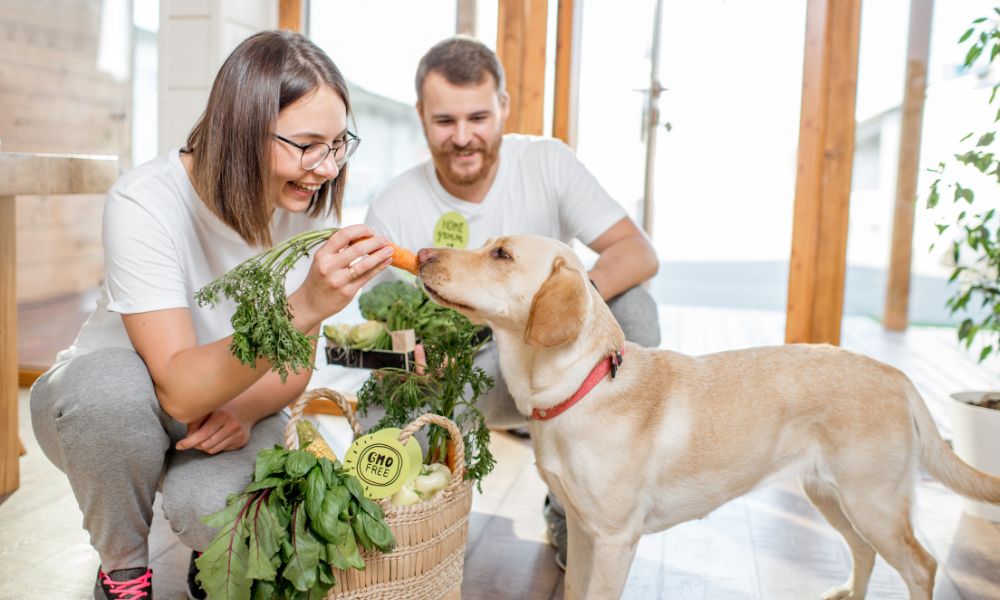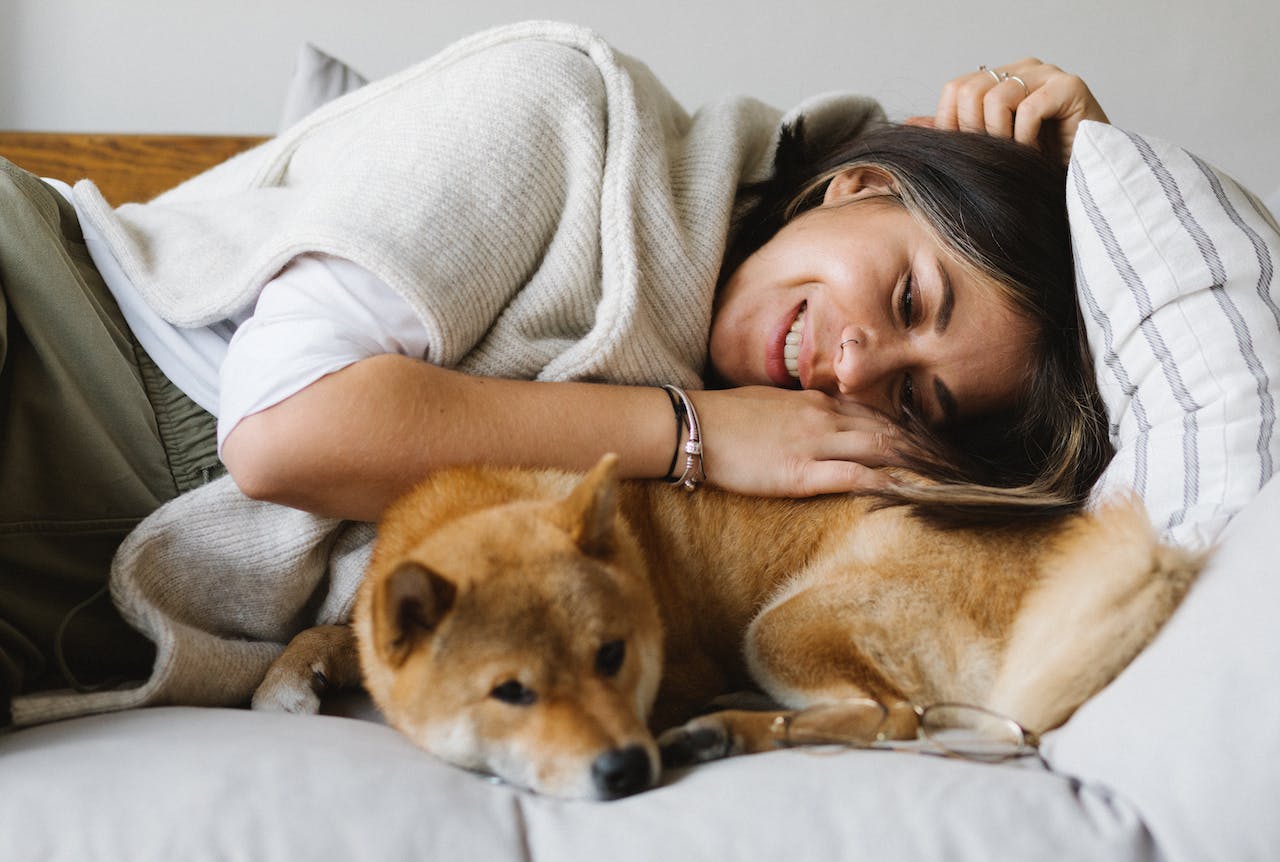
Should I Be Covering My Dog's Crate With A Blanket At Night?

Covering your dog's crate at night is a common practice among pet owners, but is it really necessary? This article explores the benefits, considerations, alternatives, and training tips for using a blanket on your dog's crate at night.
Key Takeaways
- Covering your dog's crate can promote a sense of calmness and security for your pet.
- Regulating the temperature inside the crate can help your dog sleep comfortably through the night.
- Consider your dog's comfort, ventilation, and safety before covering the crate with a blanket.
- Explore alternatives like using a night light, white noise machine, or comfortable bedding instead of a blanket.
- When training your dog to use the crate at night, focus on gradual introduction, positive reinforcement, and establishing a consistent routine.
Benefits of Covering Your Dog's Crate at Night
Promotes Calmness
Covering your dog's crate can be a simple yet effective way to help your furry friend feel more at ease during the night. A covered crate mimics the den-like environment dogs instinctively seek, offering a secluded and sheltered space away from the hustle and bustle of daily life. This can be particularly beneficial for dogs who are prone to anxiety or are easily disturbed by external stimuli.
When deciding to cover your dog's crate, consider the following:
- The type of blanket or cover used should be breathable to ensure proper air circulation.
- It's important to monitor your dog's response to the covered crate to make sure they are comfortable with the change.
- Some dogs may prefer a partially covered crate, allowing them to see out while still feeling protected.
Remember, every dog is unique, and what works for one may not work for another. It's essential to tailor the crate environment to your dog's individual needs to promote a sense of calmness and security.
Provides Security
Covering your dog's crate can be a simple yet effective way to give your pet a sense of security. Dogs are den animals by nature, and a covered crate mimics the enclosed space of a den, which can be reassuring for them, especially in a busy household or during stressful situations.
- It creates a private space where your dog can retreat and feel protected from the hustle and bustle around them.
- The cover can serve as a barrier to visual stimuli that might otherwise cause anxiety or overexcitement.
Remember, while covering the crate can provide security, it's important to observe your dog's behavior to ensure they are comfortable with the cover and not showing signs of distress or discomfort.
Regulates Temperature
Covering your dog's crate can help in maintaining a comfortable temperature for your pet throughout the night. Dogs, much like humans, need a cozy environment to ensure a good night's sleep. A blanket can serve as an insulator, keeping the warmth in during colder nights and providing a cooler, shaded area during warmer seasons.
To effectively regulate temperature within the crate, consider the following:
- Use a lightweight blanket during summer to allow air circulation while still providing shade.
- Opt for a heavier, thermal blanket in winter to retain heat.
- Always ensure the material is breathable to prevent overheating.
Remember, the goal is to mimic the ideal sleeping conditions for your dog, similar to how Paw.com orthopedic cooling memory foam cushions regulate body temperature. By doing so, you can help your dog achieve restful sleep, which is crucial for their health and well-being.
Considerations Before Covering Your Dog's Crate

Dog's Comfort
Ensuring your dog's comfort is paramount when deciding to cover their crate at night. Consider the type of blanket you're using; it should be lightweight and breathable to prevent overheating. Here are a few tips to ensure your dog stays comfortable:
- Use a blanket that your dog is familiar with to provide a sense of comfort.
- Make sure the blanket doesn't restrict airflow by leaving some areas uncovered.
- Regularly check on your dog to ensure they are not showing signs of distress.
Remember, each dog is unique and what works for one may not work for another. Pay close attention to your dog's behavior when you first cover the crate. If they seem anxious or uncomfortable, it might be necessary to reconsider or adjust your approach.
Ventilation
While covering your dog's crate can create a cozy den-like atmosphere, it's crucial to ensure that there is adequate ventilation. A well-ventilated crate is essential for your dog's comfort and health, preventing overheating and ensuring fresh air circulation. Here are some tips to maintain proper airflow:
- Use a lightweight and breathable fabric if you choose to cover the crate. This allows air to circulate while still providing the benefits of a covered crate.
- Make sure the blanket or cover does not block the crate's vents or door. Your dog should always have a clear path for air to enter and exit the crate.
- Periodically check on your dog to ensure they are not showing signs of distress or discomfort due to poor ventilation.
Remember, the goal is to create a safe and comfortable environment for your dog to rest. If you notice any changes in your dog's behavior or signs of respiratory distress, reconsider the setup of the crate cover to improve airflow.
Safety Concerns
When considering the safety of covering your dog's crate, it's crucial to never completely cover the crate as it can lead to restricted airflow. A well-ventilated space is essential for your dog's health and comfort throughout the night. Here are some safety tips to keep in mind:
- Ensure that the blanket allows for adequate airflow; choose breathable fabrics.
- Keep the covering away from any heat sources to prevent the risk of overheating or fire.
- Regularly check for signs of wear and tear on the blanket to avoid any choking hazards.
By taking these precautions, you can create a safe and cozy environment for your dog without compromising their well-being.
You may also like: Pet Bedside Sleeper Crate Kit & Stairs
Alternatives to Using a Blanket on Your Dog's Crate
Night Light
Incorporating a night light near your dog's crate can be a gentle way to provide comfort without the need for a blanket. A soft glow can mimic the serenity of moonlight, offering a natural and calming environment for your dog. Here are a few points to consider when using a night light:
- Choose a light that emits a warm, soft glow rather than a bright, harsh light.
- Position the light in a way that it doesn't shine directly into the crate, to avoid disturbing your dog's sleep.
- Ensure the light is safe for pets and does not have any small, easily detachable parts that could be a choking hazard.
A night light can also be beneficial for you, making it easier to check on your pet during the night without fully waking them or yourself. Remember, the goal is to create a tranquil space that supports your dog's natural sleep cycle.
White Noise Machine
In addition to a night light, a white noise machine can be a valuable tool for creating a soothing environment for your dog at night. These devices emit a consistent, ambient sound that can mask disruptive noises from the outside world, such as traffic or thunderstorms. Here's how you can effectively use a white noise machine for your dog's comfort:
- Select a white noise machine designed specifically for dogs
- Place the machine at a distance where the sound is audible but not overwhelming.
- Experiment with different sounds and volumes to find what works best for your pet.
Remember, the goal is to provide a calm atmosphere that will help your dog feel secure and allow them to sleep undisturbed throughout the night.
Comfortable Bedding
Ensuring your dog has comfortable bedding within the crate can be a simple yet effective alternative to covering it with a blanket. A well-chosen bed can provide the necessary warmth and cushioning, enhancing your dog's sleep quality without the need for additional coverings.
When selecting bedding for your dog's crate, consider the following:
- The size of the bed should match the crate dimensions to prevent it from bunching up or being too small.
- Opt for materials that are easy to clean and maintain, as hygiene is crucial for your dog's health.
- Look for beds with orthopedic support if your dog is older or has joint issues.
Training Tips for Crate Use at Night
Gradual Introduction
Introducing your dog to their crate should be a slow and patient process. Start by placing the crate in an area where your dog spends a lot of time to create a sense of familiarity. Encourage exploration by leaving the door open and placing treats or their favorite toys inside. This will help your dog associate the crate with positive experiences.
Once your dog seems comfortable approaching the crate, begin feeding them their meals near it, and slowly moving the food bowl inside. This step-by-step approach allows your dog to build a positive relationship with the crate at their own pace. Remember, forcing your dog into the crate can lead to anxiety and fear, which are counterproductive to successful crate training.
After your dog is eating meals in the crate without hesitation, start practicing with short, closed-door sessions while you're home. Increase the time gradually, always monitoring your dog's comfort level. If they show signs of distress, take a step back in the process and proceed more slowly.
Positive Reinforcement
Incorporating positive reinforcement into your dog's crate training routine can significantly enhance their perception of the crate. Reward your furry friend with treats and affectionate praise whenever they enter the crate voluntarily or settle down quietly for the night. This approach not only encourages them to associate the crate with positive experiences but also reinforces their good behavior.
- Start by rewarding any interest your dog shows towards the crate.
- Gradually increase the rewards as they spend more time inside.
- Always maintain a cheerful and encouraging tone when interacting with your dog around the crate.
Remember, consistency is key. Make sure to reward your dog every time they follow the desired behavior. This will help solidify the crate as a safe and comfortable space, akin to their own personal den.
Establishing Routine
Consistency is key when it comes to crate training your dog for nighttime use. Establish a regular schedule for your dog's bedtime and stick to it, as dogs thrive on routine. This includes taking your dog out for a final bathroom break at the same time each night before settling them into their crate.
- Begin by choosing a specific time for your dog to go to bed each night.
- Ensure the last activity before crate time is calming, such as a gentle play session or a short walk.
- Say a goodnight phrase or perform a specific action each time you put your dog in the crate to signal bedtime.
By maintaining a consistent routine, your dog will learn to associate the crate with sleep time, making the process smoother for both of you. Remember, patience and persistence are crucial as your dog adapts to this new habit.
Bottom Line
In conclusion, covering your dog's crate with a blanket at night can provide a sense of security and comfort for your pet. It can help create a cozy and den-like environment, promoting better sleep and reducing anxiety. However, it is essential to consider your dog's individual preferences and needs before deciding whether to cover the crate. Consulting with a veterinarian or animal behaviorist can help you make the best decision for your furry companion. Ultimately, the choice to cover the crate with a blanket at night should prioritize your dog's well-being and comfort.
Share this article
written by


